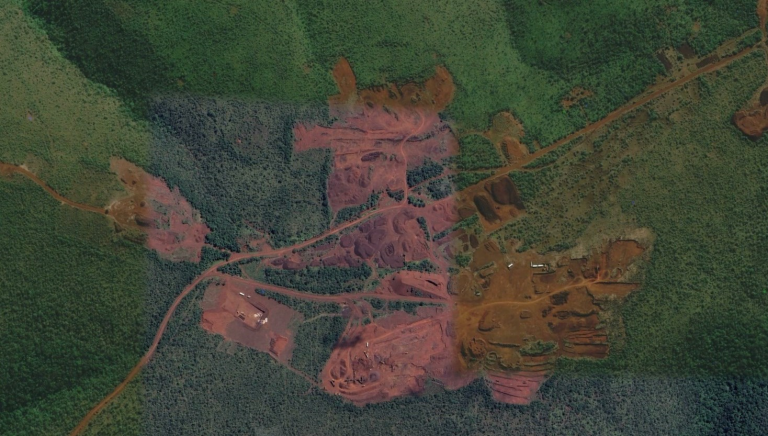
By Larry Billinger
Did you know that Jesus is actually mentioned in the Old Testament? I’m not referring to prophecies—that will be the subject of another article. Instead, today, we’re delving into the concept of “Christophanies,” or appearances of Jesus before his birth in Bethlehem.
For Christians, understanding Christophanies is crucial as it deepens the appreciation of Jesus’ eternal nature and His active involvement in God’s plan throughout biblical history. The Old Testament, replete with stories and teachings, reveals Jesus not only as a New Testament figure but also as an ever-present force in the Old Testament.
Indicators of Christophanies in the Old Testament
To identify Christophanies, one must understand both linguistic nuances and other interpretive factors. Before delving into these indicators, it’s important to note that while many of these instances I genuinely believe to be Christophanies, there are others where I’m not as certain. The beauty of exploring these potential Christophanies lies in how they bring many of the Old Testament stories to life, highlighting God’s triune nature from the very beginning. These narratives underscore the belief that God had a plan for Jesus as our redemptive savior right from the start, meticulously orchestrating events throughout history for Jesus to sacrifice for our sins ultimately. This perspective enriches our understanding of the Old Testament and strengthens our appreciation of God’s profound and intricate involvement in human history.
The Angel of the Lord vs. An Angel of the Lord (Linguistic Distinction):
In the original Hebrew text of the Old Testament, “the angel of the Lord” (Hebrew: “מַלְאַךְ יְהוָה” or Mal’akh YHVH) uniquely refers to an angel directly associated with God (YHVH). The use of the definite article “the” signifies a distinct, divine figure. In contrast, “an angel of the Lord” typically lacks the definite article in Hebrew, referring to any of God’s messengers, highlighting the unique role of “the angel of the Lord.” Consequently, Christian interpretation often views “the angel of the Lord” as a manifestation of Jesus Christ, grounded in the angel’s divine nature and its connection to YHVH.
Beyond Linguistics: Other Indicators of Christophanies:
- Divine Attributes or Actions: The character exhibits actions or attributes only God can perform, like forgiving sins or commanding worship.
- Direct Claims of Divinity: The figure speaks as God or makes claims exclusive to God.
- Theological Context: The narrative context aligns with Christian theology about Christ.
- Reactions of Other Characters: How others react to the figure, such as worship or expressing fear of having seen God, can indicate a divine status.
- New Testament References: The New Testament might identify an Old Testament figure as Christ.
- Prophetic Fulfillment: The figure prefigures or foreshadows Christ’s work and person.
- Name or Title Given: Specific names or titles, like “Mal’akh YHWH,” can signify importance.
- Nature of the Encounter: Unusual or transcendent details in the encounter can hint at a Christophany.
Examples of Christophanies
Let’s now examine specific instances in the Old Testament interpreted as pre-incarnate appearances of Jesus Christ. These narratives, rich in symbolism and theological significance, illustrate Christ’s active presence and involvement in history before His New Testament birth.
The Garden of Eden (Genesis 3:8)
Indicator: Divine Presence
The presence of God walking in the Garden, interpreted as a Christophany, suggests a physical manifestation of God in a form approachable by humans.
8 Then the man and his wife heard the sound of the Lord [YHVH] God as he was walking in the garden in the cool of the day, and they hid from the Lord God among the trees of the garden.
Genesis 3:8 NIV
Jacob Wrestling at Peniel (Genesis 32:24-30)
Indicator: Divine Attributes and Direct Claim of Divinity
Jacob’s opponent is able to bless him and is acknowledged as God by Jacob himself (“I have seen God face to face”). This encounter combines divine attributes with a direct claim of divinity, leading to its interpretation as a Christophany.
30 So Jacob called the place Peniel, saying, “It is because I saw God [Elohim] face to face, and yet my life was spared.”
Genesis 32:30
The Burning Bush (Exodus 3:2)
Indicator: Divine Presence and Revelation
The figure in the burning bush, identifying as God, communicates directly with Moses, signifying a Christophany.
2 There the angel of the Lord [YHVH] appeared to him in flames of fire from within a bush. Moses saw that though the bush was on fire it did not burn up.
Exodus 3:2
The Angel of the Lord (e.g., Genesis 16:7)
Indicator: Name or Title and Divine Attributes
“The angel of the Lord” is distinguished from other angels by the use of YHVH, indicating a unique, divine role. The actions and authority of this figure often transcend those of a typical angel, aligning more closely with divine attributes.
7 The angel of the Lord [YHVH] found Hagar near a spring in the desert; it was the spring that is beside the road to Shur.
Genesis 16:7
The Commander of the Lord’s Army (Joshua 5:13-15)
Indicator: Divine Authority and Theological Context
The commander’s authority and the reverence shown by Joshua suggest a divine status. The encounter’s context, involving the imminent fall of Jericho, aligns with the broader narrative of divine intervention and leadership.
14 “Neither,” he replied, “but as commander of the army of the Lord I have now come.” Then Joshua fell facedown to the ground in reverence, and asked him, “What message does my Lord have for his servant?”
Joshua 5:14
The Fiery Furnace (Daniel 3:25)
Indicator: Divine Attributes and Theological Context
The fourth figure in the furnace is described in a way that suggests a divine or heavenly being. The context of miraculous protection and the figure’s appearance, distinct from the other three, are interpreted as indicative of a Christophany.
25 He said, “Look! I see four men walking around in the fire, unbound and unharmed, and the fourth looks like a son of the gods.”
Daniel 3:25
Conclusion
These appearances of Jesus in the Old Testament not only deepen our understanding of His role throughout the Bible but also bridge the Old and New Testaments, showcasing a continuous narrative of redemption and divine intervention. For believers, these Christophanies are not merely historical curiosities; they are profound demonstrations of Jesus’ eternal existence and His integral role in God’s plan for humanity.




